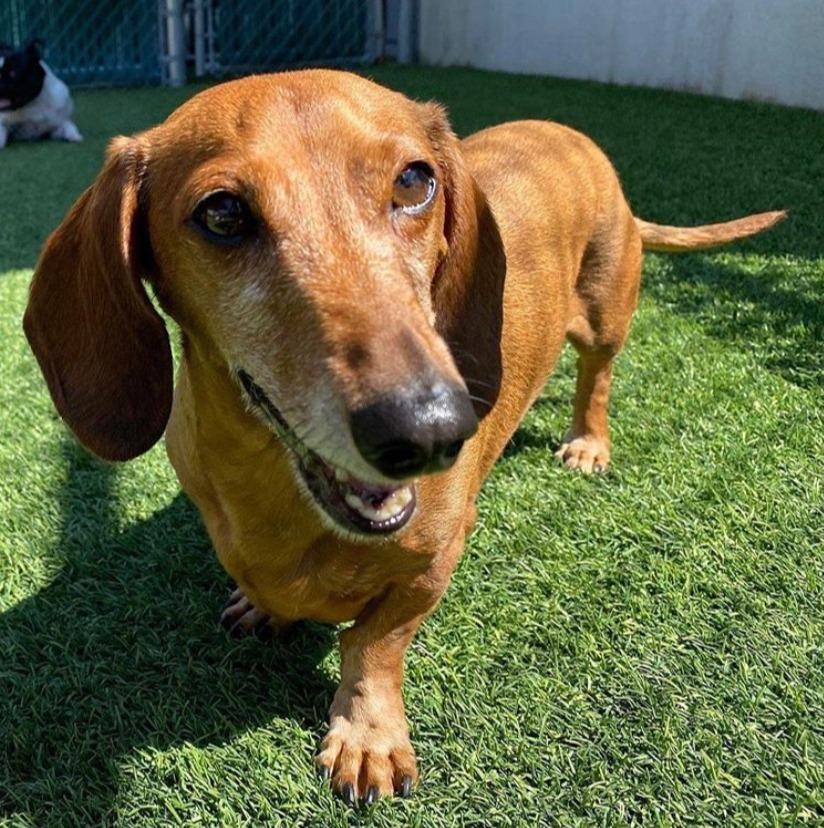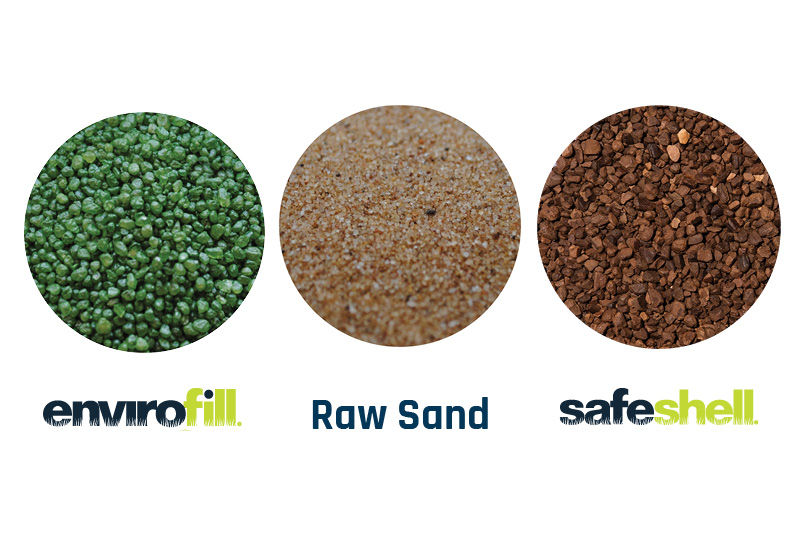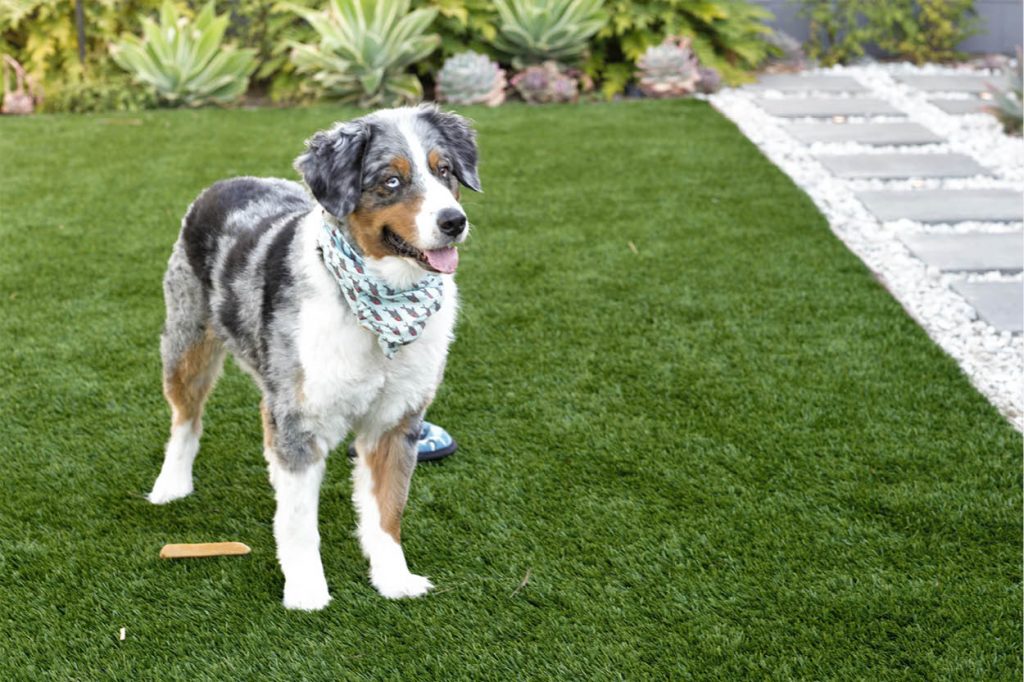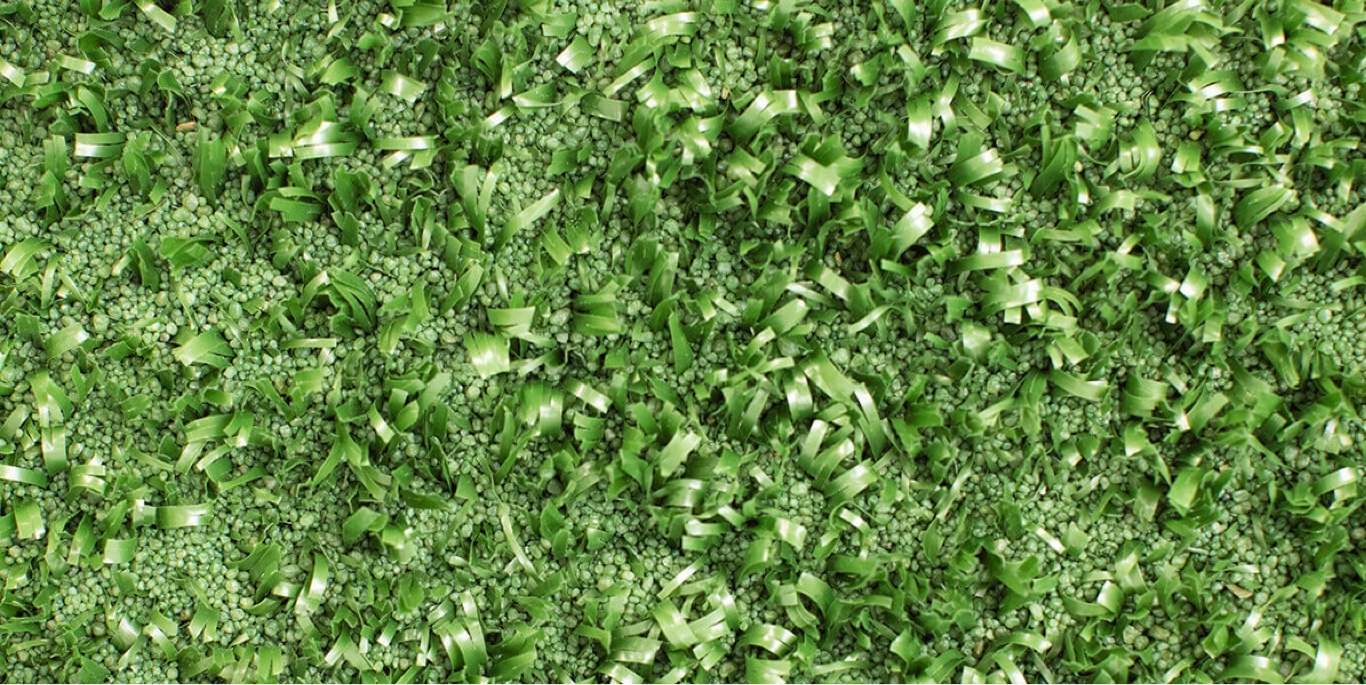
Infill Landscape Blog
Subscribe To Email Updates
Subscribe to our weekly newsletter and we’ll send updates straight to your inbox
Reviving Flat Artificial Turf: Tips for a Lush, Upright Lawn
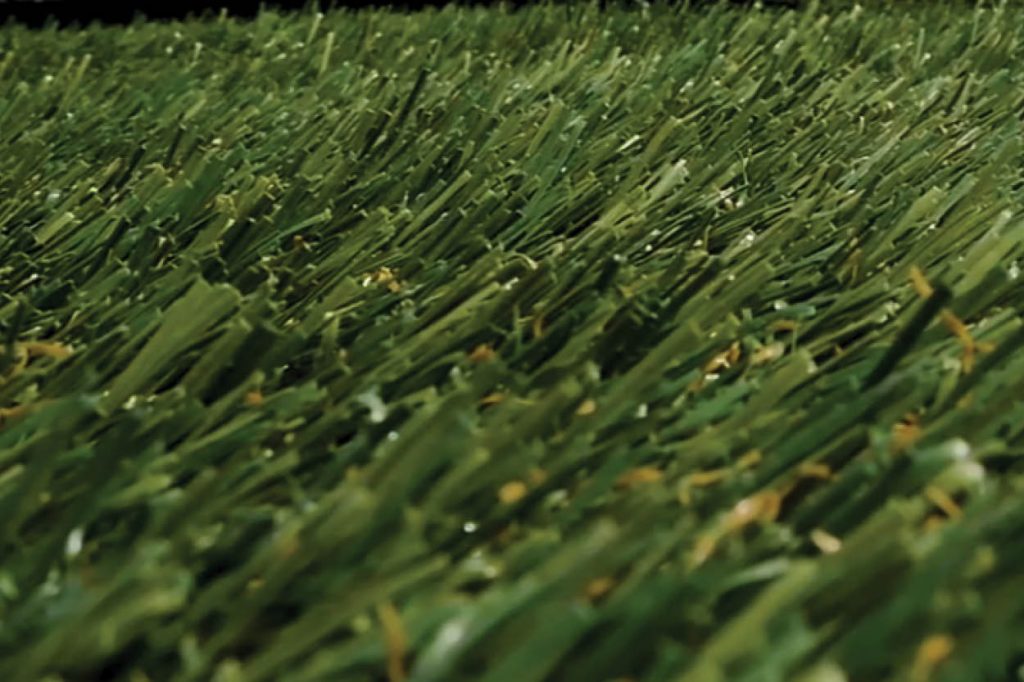
There’s nothing quite like the easy beauty of a well-scaped synthetic turf yard. It’s neat and low-maintenance, perfect for busy homeowners who want their yards to look great without the fuss of watching over grass growth and worrying about what the weather will do to the landscaping.
You’ll scarcely encounter any trouble with well-designed residential artificial grass landscapes, but one thing that may bother you is that over time, turf tends to become “flat.” Turf fibers lay horizontally and lose their ability to be upright, giving the lawn an unkempt appearance. So, if your turf is flat, how do you get it to stand up again?
To fix things, you need to go below the surface and assess the state of your artificial turf infill. Why? Let’s dive in.
What is Artificial Turf Infill?
Artificial turf infill is a product that is placed between the fibers/blades of artificial grass. Infill helps keep turf fibers upright, giving the turf surface a full and luscious look. Without infill to help the fibers stand up, turf is more prone to blades breaking, fraying, and matting down.
So it follows that if there’s something wrong going on at the top (with the artificial grass fibers), something needs to be done about what’s on the bottom (the infill).
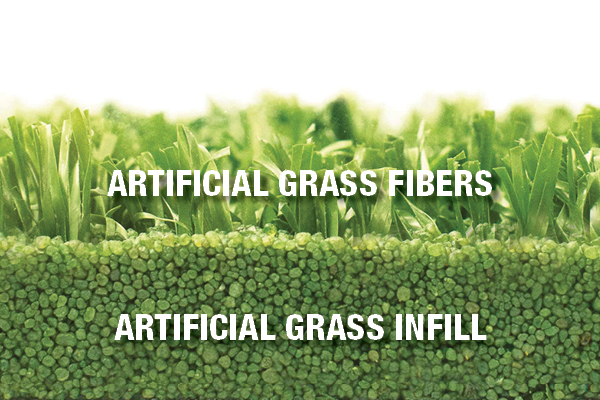
Low or Inconsistent Infill Depths are the Main Contributor to Flat Artificial Grass
The main reason turf fibers flatten and lose the ability to “stand” vertically like natural grass is low turf infill depth.
Here are two problems lawn owners typically run into:
- Often, installers do not add enough infill to brand-new turf systems. This can leave your artificial turf looking flat right from the beginning.
- Infill levels naturally settle, and material can be displaced over time, especially in highly trafficked areas of your yard, mainly if you live in a region with four seasons and lots of precipitation.
Starting off with a low-maintenance, durable infill in the proper amounts will keep your artificial turf lawn in better shape over time.
How Deep Should My Infill Be?
To keep your artificial grass turf fibers standing upright, it’s important to monitor the infill and replenish or top it off as required, especially in high-traffic areas. Check out these infill depth recommendations before installing a turf system in your home.
| Envirofill Size | Turf Pile Height | Turf Spec | Depth | Lbs. Per Sq. Ft. |
|---|---|---|---|---|
| 30/50 | 1/2″ | Texturized PE/Nylon | 7/16” – 1/2″ | 1.5-2.0lbs |
| 30/50 | 5/8″ | Texturized PE/Nylon | 9/16” – 5/8″ | 2.0-2.5lbs |
| 20/40 | 5/8″ | Texturized PE Tennis | 5/8″ – 11/16″ | 2.5lbs-3lbs |
| 16/30 | 1-1¼” | PE/PP Putting | ¼” (Top dressed) | .25-.5lbs |
| 12/20 or 16/30 | 1-1¼” | Pet/Playground | ⅜” – ½” | 1.5-2.5lbs |
| 12/20 or 16/30 | 1½ – 1 ¾ | Landscape | ½” – ¾” | 2.5-3.5lbs |
| 12/20 or 16/30 | 1⅞” – 2 ¼” | Landscape | ¾” – 1” | 3.5-4.5lbs |
Replace Your Infill Regularly
A rule of thumb is to replace your infill at least every 18 months. Keep an eye on your synthetic grass to see if you need to do it sooner. If you wait too long to replace the infill, your artificial grass will look matted, worn down, and damaged. If the condition of your turf has declined to this point, unfortunately, you can’t get it back 100% to how it should be. Preventative maintenance, including monitoring and restoring infill levels, is the best way to avoid this situation and protect the longevity of your lawn.
Consider having a couple of bags of your selected turf infill stored in your shed or garage at all times to replenish levels as needed.
Want to know more about infills? Read our post on the importance of infill.
How Do You Lift Artificial Turf? Step-By-Step Instructions To Get Your Turf To Stand Tall Again
Fix flattened fake grass with this easy yearly care protocol:
1. Brush Your Lawn

Use a broom, stiff brush, or power broom (depending upon what tools you have) across your artificial turf surface to get the turf fiber standing tall. If additional infill needs to be added, this will help “open” the surface so that the infill granules have an easier entry in between the fibers. If your turf carpet is only flat in a small area, use the wire brush in that area and then jump to step 3.
2. Check Infill Depths
Check your infill depth with an infill gauge. When using the infill depth gauge, make sure that you review infill depth guidelines to know how much infill you should have in your system. If your infill is extremely low throughout the entire system, download these installation guidelines, and follow the steps to add a consistent layer across your entire turf system.
3. Top Off Your Infill
If you only have a few low-infill areas, start off by adding handfuls of infill into specific spots with lower levels.
4. Work Additional Infill Into the Turf Fibers
After more infill is added, use your broom and/or a small wire brush to work it into the turf.
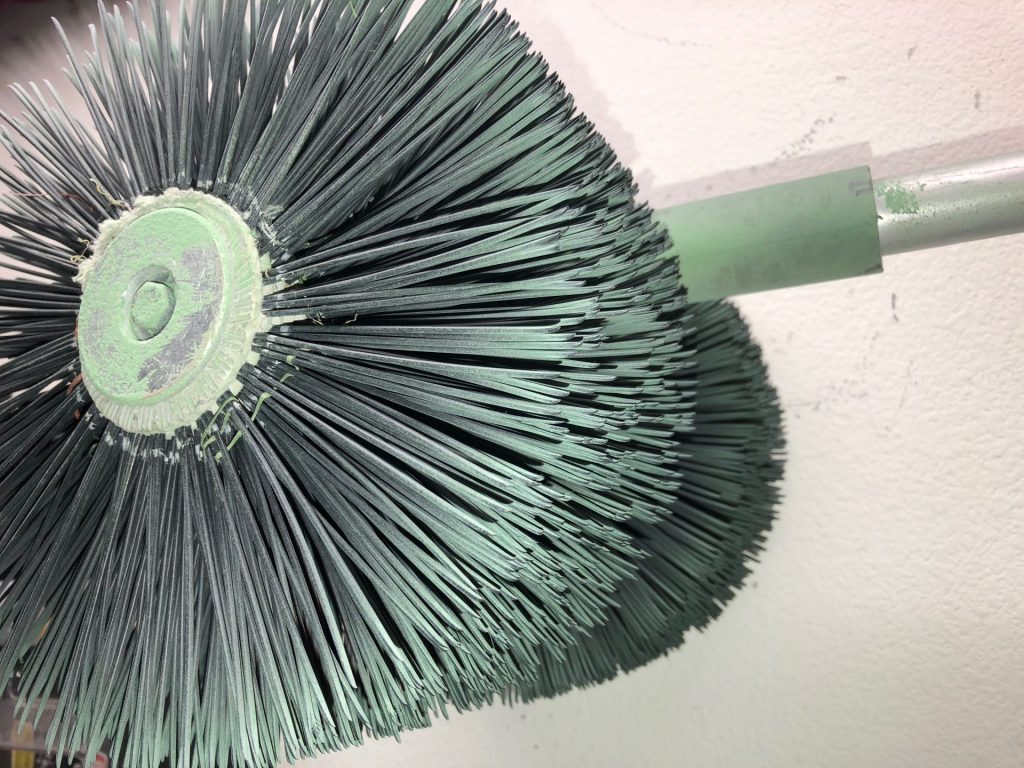
5. Check That Your Turf Blades are Now Vertical
Once completed, the grass blades should appear vertical (there might be a slight angle) and consistent across the surface. If some areas appear flat or matted, more infill may be needed.
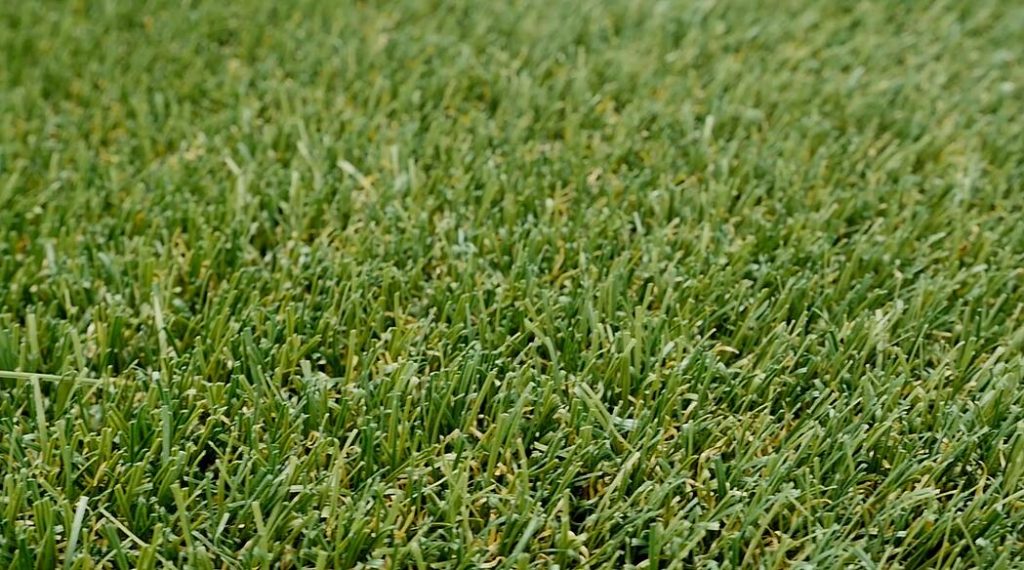
6. Finish With a Quick Infill Depth Check
Finally, use the infill measuring device again to confirm the proper recommended depth and repeat if necessary.
Does Laying Heavy Objects Like Lawn Furniture Make My Artificial Grass Flat?
Most heavy items, like lawn chairs, are commonly placed on synthetic turf yards, and that’s ok. However, furniture with sharp edges will puncture the turf. If you leave bulky or heavy objects in the same place over extended periods, it will cause the turf to lay flat, and the objects will leave imprints.
The best practice is to move objects around on the turf frequently to prevent flattening and fill your infill to the top of the turf fibers in areas where the furniture will be placed.
If you find a flat spot in your turf from furniture, equipment, etc., watch this short video below to learn how to revitalize the flat section.
Get the Best Turf Infill for Yard and Home Landscaping
Envirofill and Safeshell are two of the most popular turf infills in residential artificial grass applications.
Got pets? Get Envirofill. It’s the cleanest choice for families with children and pets. Help combat stains, smells, and bacterial growth with Envirofill, an innovative turf infill infused with Microban antimicrobial product protection. The type of turf grass you choose for your yard and home landscaping is just as important as your turf infill. Discover the best artificial turf for your dog here.
If you’re committed to creating an artificial grass yard with the most negligible environmental impact, Safeshell is the gold standard. It’s an organic, nontoxic infill made from a proprietary blend of ground walnut shells (but don’t worry –it’s allergen-free). Domestically sourced, Safeshell offers high-quality, low-maintenance turf landscaping that’s long-lasting and earth-friendly.
Questions about your home’s artificial grass? Ask our infill experts!
Similar Blogs
